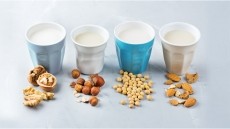Saudi coffee trends: Local products faring well, caffeine intake levels within recommended limit despite rising popularity

In 2020, the Observatory of Economic Complexity stated that Saudi Arabia ranked 18th among countries that were importing the largest amounts of coffee worldwide.
This was further accelerated by several government initiatives, such as the designation of 2022 as “Year of Saudi Coffee”, and the launch of Saudi Coffee Company by the Public Investment Fund in May that year.
Rooted in Saudi tradition and diets, Arabic coffee is one of the most consumed hot beverages in the country, with its name officially changed to “Saudi coffee” in 2022.
On the other hand, Turkish-style coffee is consumed in countries across the Middle East, including Saudi Arabia.
With the considerable increase in Saudi and Turkish coffee intake, there was a need to examine nationwide consumption patterns and evaluate the contributions of these beverages towards health and nutrition.
A cross-sectional study was conducted to assess the frequency and quantity of Saudi and Turkish coffee consumption in association with sociodemographic factors, and to determine whether the caffeine intake levels align with recommended guidelines.
The analysis included 1,030 participants from five major Saudi cities, aged 15 years or older, who answered an online questionnaire between September 2021 to January 2022.
The results indicated that Saudi coffee is more widely consumed than Turkish coffee in the study population. This is seen from both the proportion of respondents consuming Saudi coffee (88%) versus Turkish coffee (33.2%), and the frequency of consumption.
In addition, 40% of respondents consumed Saudi coffee five to six times per week, while 16% reported drinking Turkish coffee one to three times per month.
It was also found that three sociodemographic parameters were significantly associated with the consumption patterns of both Saudi and Turkish coffees, namely marital status, age, and region.
Specifically, the frequency of Turkish coffee consumption was significantly different based on the respondents’ age, nationality, marital status, educational level, and region.
In contrast, individuals who consumed Saudi coffee almost every day were more likely to differ in age, body mass index, marital status, work status, monthly income, and region, compared to those who consumed it less frequently.
“While Saudi coffee is generally more consumed, Saudi and Turkish coffee consumption patterns vary across sociodemographic characteristics. This finding is consistent with existing literature stating how Saudi coffee embodies hospitality, tradition, and social interaction among the local population.
“The results of this study may contribute to the understanding of the influence of culture and public policies on consumption tendencies and trends. These insights could serve as a basis for developing and expanding nutrition education interventions to rationalise coffee consumption’s role in realising an overall healthy lifestyle, which is one of the primary targets of Saudi Vision 2030,” the researchers wrote.
Within limit
As the coffee industry in Saudi Arabia continues to grow, there are concerns about the impact on health and nutrition that could arise from elevated caffeine consumption.
Although many studies have confirmed the positive effects of caffeine intake on humans, including increased alert status, learning skills, workout performance, and enhanced mood, high consumption has been suggested to affect glucose tolerance and accelerate the elimination of minerals, such as calcium, due to its diuretic properties.
According to the US FDA, the recommended maximum daily intake of caffeine for adults is 400mg/day. This amount was not generally associated with adverse health effects, such as increased risk of cardiovascular diseases, diabetes, and gastrointestinal problems.
Laboratory analyses of samples used in this study revealed an average amount of 49.8mg caffeine/100ml in Saudi coffee, which was lower than that in Turkish coffee (129.6mg/100ml).
However, daily caffeine exposure was significantly higher for Saudi coffee than Turkish coffee, which could be explained by the high frequency and amount of the former consumed.
Nevertheless, further analysis showed that the percentage of contribution to the 400mg/day limit was low for both coffees (9.85 to 16.26% for Saudi coffee and 8.38 to 24.43% for Turkish coffee).
Even when the values for the consumption of both coffees were combined, caffeine intake remained below the recommended maximum exposure.
“This study helps elucidate the growing interest in coffee consumption among the Saudi Arabian population while providing an objective assessment of the extent to which Saudi and/or Turkish coffee could increase consumers’ risk exposure to caffeine intake.
“As caffeine intake was not calculated for other types of caffeinated beverages, this aspect should be considered in future studies, in addition to incorporating further analysis to predict coffee and caffeine consumption based on sociodemographic characteristics.”
Source: Frontiers in Nutrition
https://doi.org/10.3389/fnut.2024.1407590
“Comparative study of Saudi and Turkish coffee consumption in Saudi Arabia: insights into sociodemographic factors and caffeine intake”
Authors: Nahla Mohammed Bawazeer, et al

















